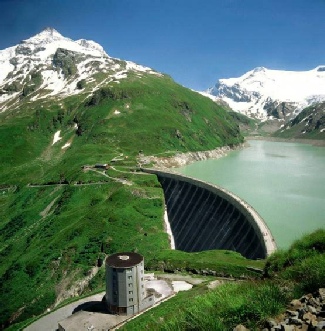
Austrian Economics An Introductory Guide
Austria has a well developed market economy with one of the highest living standards in Western Europe ranked the 4th wealthiest among EU countries.
Austria has been a member of the EU since 1995 and adopted the Euro Jan 1st 1999. This was a very positive move although the period leading up to joining could have been much better used to open up the economy to Austrian business several years before hand to allow for them to better prepare and adapt to the new economy.
Austria’s economy is based mostly on private ownership but the government owns companies in several industries as well as certain transportation and communication services. The country’s economy was in shambles after WW II – the Marshall Pan did a lot to bring Austria and the rest of Europe to their feet again. In the late 1940 s the government bought most companies of vital industries – including coal, metal mining, electric power production, iron and steel production, and oil-drilling, and refining. Aid money helped rebuild these industries.

Introductory Guide to Austrian Economic Statistic
Note Mrd- Milliard is – German equivalent of Billion
GDP/ BIP 285.4 Billion Euro
GDP 2010 $ 379 Billion, GDP per capita $ 41 700. U.S
Export $ 180.7 Bil US, Import $183.1 Bil US - 2010
Trade with the EU- 25 accounts for 84.5% of Austrian imports and exports.
GNP $ 425 Billion U.S 2010
GDP by sector services 65 %, Industry 33 5 %, Agriculture 2 %,
Employment by sector- Services 68 %, Industry and Crafts 29 %
GDP growth + 3.3 % 2006, + 2.6 % 2007, + 2.5 % 2008
Inflation 3.6 % 2011, real growth 3.1 % 2011 est 2012 0.4 %
The economic zones /clusters, of Austria include Vienna which is a major industrial, manufacturing, commercial, finance, and administration center.
Other major industrial and key economic areas include Graz, Linz, Steyr, Upper Steiermark(Leoben, Kapfenberg,) Innsbruck, Salzburg, Dornbirn, Feldkich, Bludenz, Bregenz , Klagenfurt, and Villiach.
Labor force 2010 3.68 mil
Unemployment 5.4% 2011
Inflation – 2007- 2.2 %, 2008 3.2 %
Jan 2002 saw the introduction of the Euro currency in Austria.
Austria is acknowledged as an ideal location for administrative corporate Headquarter Offices, particularly Vienna with its historical connections as a bridge between Western and Central and Eastern Europe. There is a great potential for attracting EU firms seeking convenient access to develop markets in Central and Eastern Europe as well as the Balkans.
Introductory Austrian Manufacturing Guide
There are factories throughout the county but the heaviest concentration is in the Vienna area. Manufactures stress the high quality rather than mass production. Many factories are small and medium sized. In small work shops throughout Austria skilled craft workers produce excellent glassware, jewellery, needlework, porcelain objects woodcarvings and other handicrafts.
Austria’s leading manufacturing includes the production of metals and metal materials. The chief metals include iron and steel, the main metal products include automobiles and other motor vehicles, locomotives, machines and tools and (river) ships.
Other major manufactured products are: chemical products, electrical equipment processed foods and beverages, textiles and clothing. Austrian factories also produce cement, furniture, glass, and porcelain products, lumber, optical instruments, paper and pulp and plastics, computer chips
and communications equipment. © 2007 - 2020
See our comprehensive Travel Itineraries of Austria